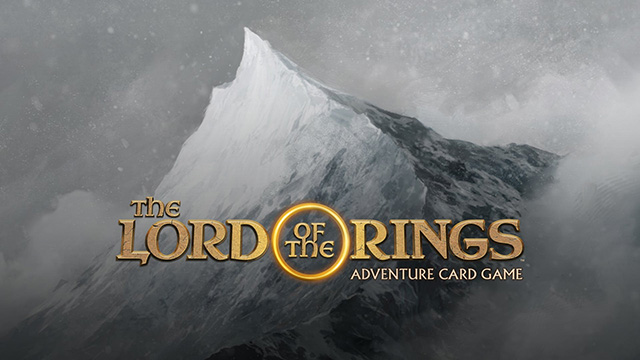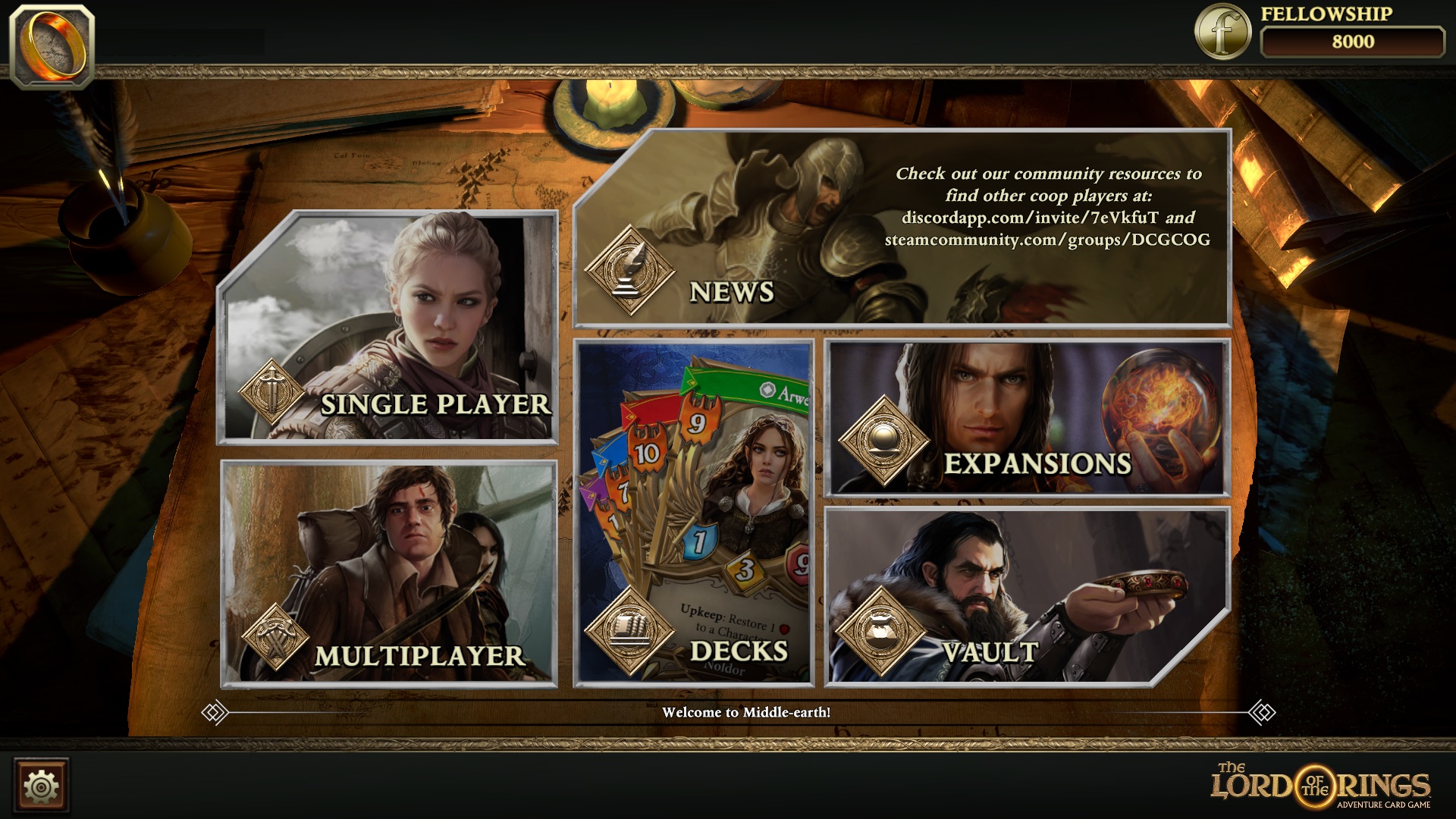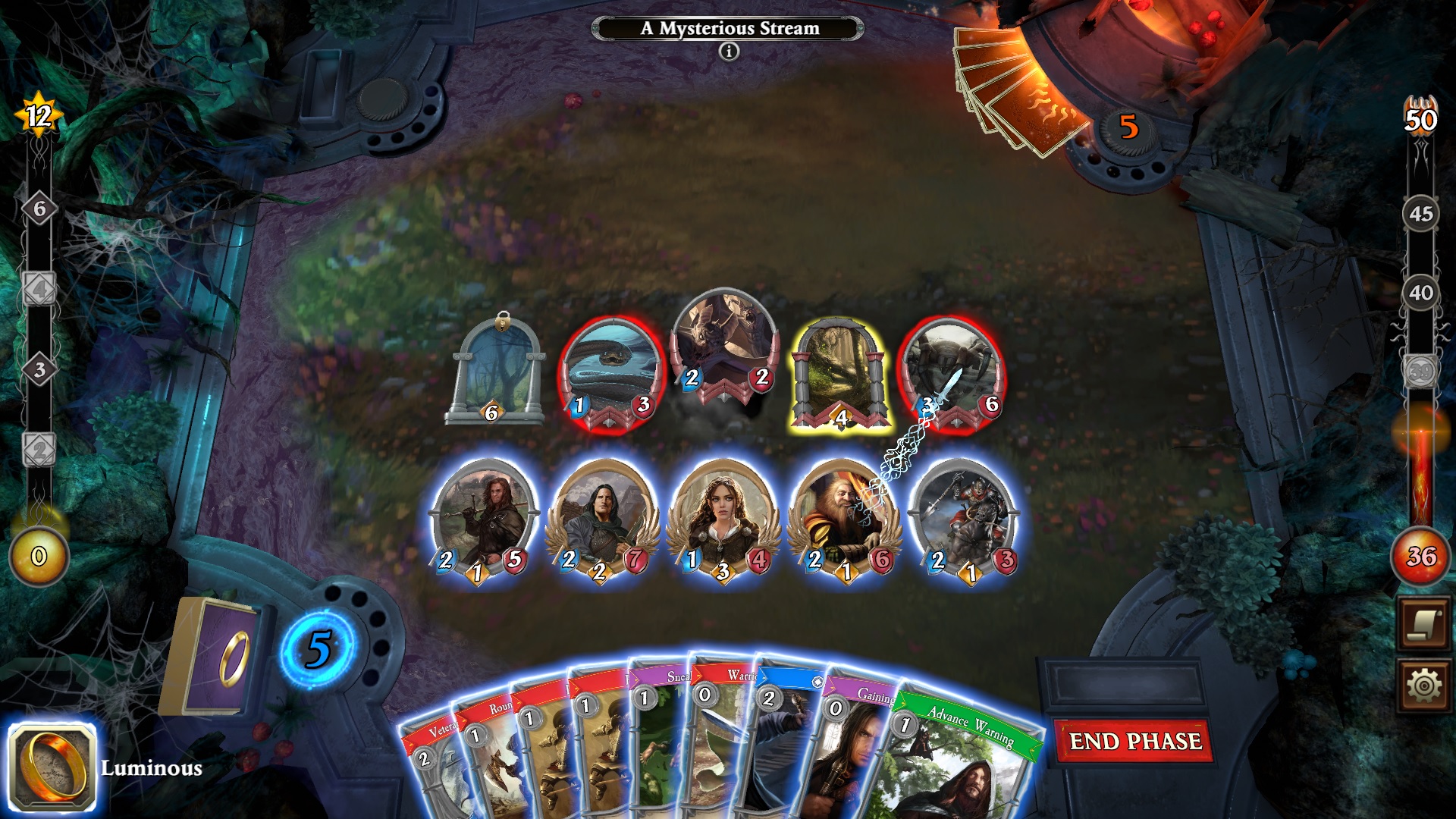The Lord of the Rings is undeniably the most influential fantasy franchise of the last century. It has been adapted into so many different forms of media that it’s sometimes hard to find your way through all of them, including the many video game adaptations.
Now, the story of men, elves, and dwarves has been transformed into a CCG, which, unsurpisingly, looks a lot like Hearthstone.
However, there is one big difference: The Lord of the Rings: Adventure Card Game is a pure PvE game, which means that there are no ladders to climb and no players to compete against. This CCG plays out like a typical PvE adventure with different campaigns that culminate in a final battle against Sauron, the infamous antagonist of the LotR franchise.
Additionally, The Lord of the Rings: Adventure Card Game isn’t a free-to-play game, which means that it is targeted primarily at the fans of the LotR franchise, those who are most ready to spend money for each new expansion.
Traipsing Across a Beautiful Land
Something sinister is happening in Middle Earth that may change the fates of all its inhabitants. It’s an opening very similar to the original LotR story, where we learn that the evil mastermind Sauron has awoken and is looking for his most precious possession: the one ring to rule them all.
From here, players travel across the map either alone in single-player mode, or they team up with a friend in co-op mode. As is expected from a game in the Tolkien universe, the design of each board is gorgeous, and each changes according to your location on the map. Accordingly, each card has its own unique art as well, and all of them are accompanied by distinct sounds and voiceovers.
Unfortunately, as you progress through the game, it becomes evident that there isn’t much variety in any of the objectives, and the only way to raise the stakes is to play on the highest difficulty.
Taking the Fight to Sauron
As you progress through questlines, you unlock new cards, which, of course, can be added to your deck. You can also choose to engage with optional encounters and get new cards. The game allows you to change decks and even the difficulty settings before each quest or encounter, so this makes the gameplay a bit easier to handle than it otherwise might be.
Each deck consists of three hero cards and three other card types, which include allies, equipment, and events. The latter of which are basically spells. Each card has a mana cost, which is called Resource. Players have access to three points of Resource every turn, and if you skip your turn, these points continue to stack.
Sauron’s decks have tricks of their own, too, such as Treacheries that serve as traps during match-ups. The funny thing is that you don’t really know what kind of Teachery will trigger next, which brings a strong element of RNG into the game.
There are also two types of meters on the main screen: the Fate meter and the Threat meter. The Fate meter is filled using the Willpower values attached to your cards; additional abilities can be triggered using Fate points.
When building a deck, players have access to five sphere types as well: Leadership, Lore, Spirit, Tactics, and Neutral. Different spheres are indicated by the color of the card and their main focus. For example, Leadership is represented by purple, and the sphere focuses on defensive abilities; Lore spheres are green, and they focus on healing.
You can combine different spheres into synergies and create some really powerful decks. Since there are three heroes available for each deck, you can combine up to three different spheres in one deck.
There are also 12 factions (or races) that determine what kinds of equipment and events can be used alongside them. This creates certain limitations when it comes to deck building, but it also helps you choose cards with better synergies, which in the end, wins you games.
Besides all of that, each card has its own mechanics that can be used in specific situations, such as Guard, which protects your heroes, Exhaust, which renders enemy minions useless, Ranged, which allows you to bypass minions with Guard, and many others.
If you’ve played CCGs before, then most of these mechanics will be very much familiar to you. In this regard The Lord of the Rings: Adventure Card Game is easy to learn, and you can quickly come up with a decent deck without too much experience playing the game.
Leaving the Shire Behind
Pros:
- Lots of great mechanics
- Excellent design and card art
Cons:
- Quests feel grindy and “samey”
- No PvP mode
The Lord of the Rings: Adventure Card Game has a lot of great ideas, but because it’s exclusively a PvE game, it gets boring pretty quickly. All of its quests are scripted, and there’s little value in replaying them on the same difficulty. The only choice is to increase the difficulty, which, at times feels like a chore.
While PvP would not change that fact, it would make the game incredibly interesting, especially if it was offered in a free-to-play format. In many ways, it’s conceivable that many Hearthstone players regard it as a serious competition to the Blizzard favorite.
Since The Lord of the Rings: Adventure Card Game is a digital adaptation of the physical board game, it was a natural choice to make the video game in a similar fashion. But physical games and video games are two different types of experiences, and if PvE works great in the physical world, it, unfortunately, doesn’t work in the same way here, especially in a world oversaturated with free-to-play CCGs.
[Note: A copy of The Lord of the Rings: Adventure Card Game was provided by Asmodee Games for the purpose of this review.]










Published: Sep 6, 2019 09:46 am